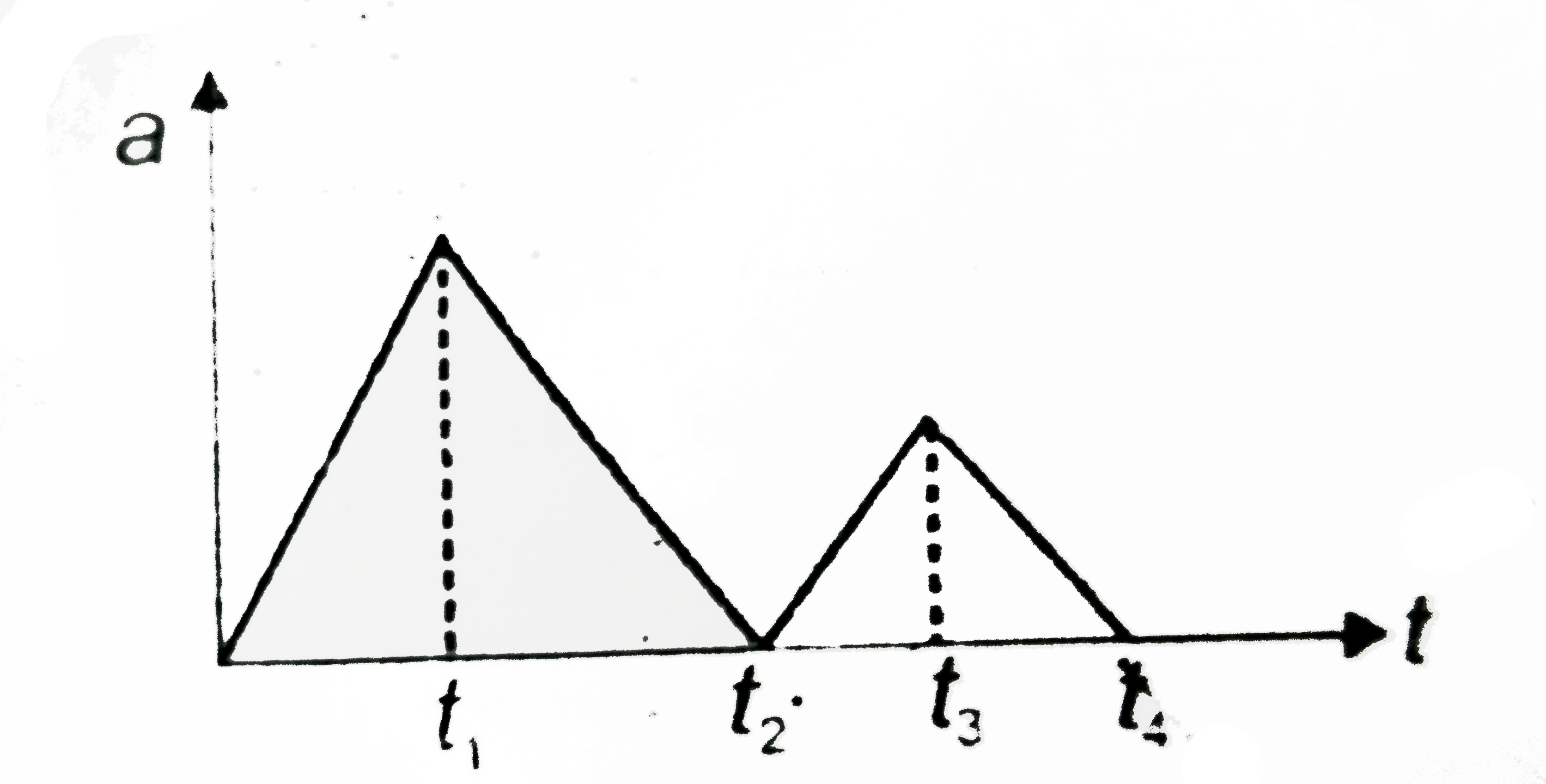A particle of mass 3 kg moves under a froce of [4ˆi+8ˆj+10ˆk] newton . Calcutale the acceleration (as vector) to which the particle is subjected. If the particle starts from rest and was at the origin initially. What are its new co - ordinates after 3 s?
The correct Answer is:12 km
To solve the problem step by step, we will follow these steps:
Step 1: Calculate the acceleration
We know that the force acting on the particle is given by:
→F=4^i+8^j+10^k N
The mass of the particle is:
m=3 kg
According to Newton's second law, the acceleration →a can be calculated using the formula:
→F=m→a⟹→a=→Fm
Substituting the values:
→a=4^i+8^j+10^k3
Calculating this gives:
→a=43^i+83^j+103^k m/s2
Step 2: Determine the new coordinates after 3 seconds
Since the particle starts from rest, the initial velocity →u is:
→u=0 m/s
We will use the equation of motion to find the displacement →s:
→s=→ut+12→at2
Substituting the values:
→s=0⋅3+12(43^i+83^j+103^k)(32)
Calculating 32:
32=9
Now substituting this back into the equation:
→s=12(43^i+83^j+103^k)⋅9
This simplifies to:
→s=92(43^i+83^j+103^k)
Calculating each component:
→s=(9⋅46^i+9⋅86^j+9⋅106^k)
This gives:
→s=6^i+12^j+15^k m
Final Answer
The new coordinates of the particle after 3 seconds are:
→s=6^i+12^j+15^k m
---
We know that the force acting on the particle is given by:
→F=4^i+8^j+10^k N
The mass of the particle is:
m=3 kg
According to Newton's second law, the acceleration →a can be calculated using the formula:
→F=m→a⟹→a=→Fm
Substituting the values:
→a=4^i+8^j+10^k3
Calculating this gives:
→a=43^i+83^j+103^k m/s2
Since the particle starts from rest, the initial velocity →u is:
→u=0 m/s
We will use the equation of motion to find the displacement →s:
→s=→ut+12→at2
Substituting the values:
→s=0⋅3+12(43^i+83^j+103^k)(32)
Calculating 32:
32=9
Now substituting this back into the equation:
→s=12(43^i+83^j+103^k)⋅9
This simplifies to:
→s=92(43^i+83^j+103^k)
Calculating each component:
→s=(9⋅46^i+9⋅86^j+9⋅106^k)
This gives:
→s=6^i+12^j+15^k m
The new coordinates of the particle after 3 seconds are:
→s=6^i+12^j+15^k m
Topper's Solved these Questions
- MOTION IN A PALNEBOOK - ALLENCHAPTER - MOTION IN A PALNEEXERCISE - Exercise-04[B]
14 Videos
- MOTION IN A PALNEBOOK - ALLENCHAPTER - MOTION IN A PALNEEXERCISE - Exercise-05 [A]
11 Videos
- MOTION IN A PALNEBOOK - ALLENCHAPTER - MOTION IN A PALNEEXERCISE - Comprehension#7
3 Videos
- KINEMATICS-2DBOOK - ALLENCHAPTER - KINEMATICS-2DEXERCISE - Exercise (O-2)
46 Videos
- NEWTON'S LAWS OF MOTION & FRICTIONBOOK - ALLENCHAPTER - NEWTON'S LAWS OF MOTION & FRICTIONEXERCISE - EXERCISE (JA)
4 Videos
Similar Questions
A body of mass 5kg moves under a force of 10ˆi+10ˆj−20ˆk. What is the acceleration produced?
View SolutionThe acceleration of a particle is increasing linearly with time t as bt. The particle starts from the origin with an initial velocity v0. The distance travelled by the particle in time t will be
View SolutionA particle starts from rest and moves with constant acceleration. Then velocity displacement curve is:
View SolutionA force (2ˆi+3ˆj−ˆk) newtons acts on a particle having position vector (ˆi−ˆj+2ˆk) . Find the torque of the force about origin.
View SolutionA particle of mass 2kg is moving in free space with velocity →v0=(2ˆi−3ˆj+ˆk)m/s is acted upon by force →F=(2ˆi+ˆj−2ˆk)N. Find velocity vector of the particle 3s after the force starts acting.
View SolutionA particle of mass 0.3 kg subject to a force F=−kx with k=15N/m. What will be its initial acceleration if it is released from a point 20cm away from the origin?
View SolutionA particle starts moving from rest on a straight line. Its acceleration a verses time t is shown in the figure. The speed of the particle is maximum at the instant

View SolutionA force (ˆi−2ˆj+3ˆk) acts on a particle lying at origin. What is the torque acting on the particle about origin?
View SolutionA particie of mass 10 kg is driven by a machine that delivers a constant power of 20 watts. If particle starts from rest and moves along a straight line, then force (in Newton) on particle at time t(t> 0) is
View SolutionA particle of mass m moves on positive x-axis under the influence of force acting towards the origin given by −kx2ˆi. If the particle starts from rest at x=a, the speed it will attain when it crosses the origin is
View Solution
